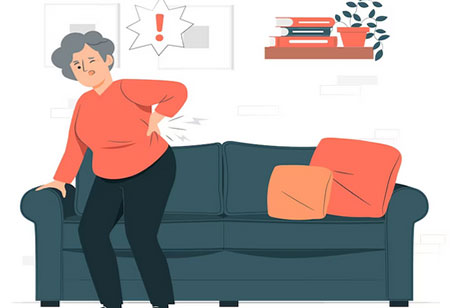
The words "long-term" and "pain" can stir discomfort on their own, yet to- gether, they imply a kind of quiet suffering that often goes unseen yet profoundly impacts the quality of life. For so many who face chronic pain each day, it is a constant unwanted companion that wears away at the spirit and weighs heavy on the mind. A diagnosis alone does little to ease what lies beneath the skin. While medications may numb the nerves for a time, they fail to address root causes or empower sustainable relief.
This article explores a holistic approach to long-term pain management, focusing on lifestyle, mental wellbeing, and natural strategies that comple- ment medical treatments. By understanding the mind-body connection and implementing lifestyle changes alongside prescriptions, it's possible to not just cope with chronic pain but actively work to diminish its hold and gain autonomy. Physical and emotional relief awaits those willing to walk this integrated path.
Mind-Body Connection
The mind-body connection describes the interdependence of our mental and physical states. In essence, what affects one will affect the other. This is especially true when it comes to pain management. Stress, anxiety, and negative emotions can exacerbate pain, while relaxation techniques and positive thinking can bring relief.
Research has shown that chronic pain patients who practice mindfulness meditation experience decreased pain levels and increased quality of life. This relaxation technique involves focusing on the present moment, acknowledging sensations without judgment, and allowing thoughts to pass without clinging to them. Another effective tool in managing pain is cognitive-behavioral therapy (CBT), which aims to change negative thought patterns and behaviors that contribute to pain.
Movement is Medicine
Physical activity is crucial for overall health and can be especially beneficial in managing chronic pain. Regular exercise helps release endorphins, the body's natural painkillers and improves sleep, mood, and energy levels. Low-impact activities such as walking, swimming, or yoga are gentle on the joints while providing significant benefits.
Additionally, physical therapy can play a vital role in managing chronic pain. A physical therapist can create an individualized exercise plan that targets specific problem areas and improves mobility, strength, and flexibility. They can also guide proper body mechanics to prevent further injury and teach relaxation techniques to reduce pain levels. Natural patches can also offer temporary relief for localized pain.
A Balanced Diet for Healing
A balanced diet is crucial for optimal health and can also aid in managing chronic pain. Some foods, such as fatty fish, leafy greens, and turmeric, have anti-inflammatory properties that can reduce pain and inflammation in the body. On the other hand, processed foods and high-sugar diets can worsen inflammation and contribute to weight gain, which can put additional strain on the body and worsen pain.
In addition to choosing anti-inflammatory foods, it's essential to maintain a healthy weight. Excess weight can put pressure on joints and contribute to inflammation and pain. Working with a dietitian or nutritionist can help create a personalized meal plan that supports healing and overall wellbeing.
Connecting with A Caring Practitioner
While managing chronic pain often requires a multidisciplinary approach, having a knowledgeable and compassionate practitioner can make all the difference. Finding a healthcare provider who takes the time to understand your unique situation and is willing to collaborate with you on finding solutions is essential.
Some practitioners may specialize in integrative or functional medicine, which focuses on treating the root cause of illness rather than just the symptoms. These approaches often involve a combination of conventional treatments and alternative therapies, such as acupuncture or herbal supplements.
Self-Care that Soothes
In addition to incorporating holistic techniques and working with a caring practitioner, self-care is an essential aspect of managing chronic pain. It involves actively caring for one's physical, mental, and emotional wellbeing.
Some examples of self-care practices include practicing good sleep hygiene, setting boundaries with others, engaging in enjoyable hobbies or activities, and seeking support from friends and loved ones. It's also important to listen to your body and rest when needed, as pushing through pain can worsen symptoms.
Unwinding Life's Tensions
Stress and chronic pain often go hand in hand, with one exacerbating the other. It's essential to find ways to unwind and relax both mentally and physically. It can include practicing mindfulness techniques, taking warm baths or showers, using heat or ice therapy, or receiving massage therapy.
Additionally, finding healthy outlets for emotions can help manage stress. It can involve writing in a journal, talking with a therapist or trusted friend, or engaging in creative activities like painting or playing music. It's essential to find what works best for you and prioritize incorporating these practices into daily life.
Support Systems for Staying Strong
Managing chronic pain can be an incredibly challenging journey, both physically and emotionally. It requires perseverance and resilience to navigate through the ups and downs.
One important aspect is to build a solid support system of people who understand and empathize with your experience. This support system can include not only friends and family members but also support groups specifically created for individuals with chronic pain. These groups provide a safe space to share experiences, exchange valuable insights, and offer much-needed encouragement.
Furthermore, support systems are crucial in holding oneself accountable for implementing necessary lifestyle changes. Having someone to check in with and hold you responsible regularly can significantly increase motivation and help you stay on track with managing chronic pain effectively.
We use cookies to ensure you get the best experience on our website. Read more...